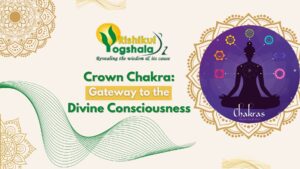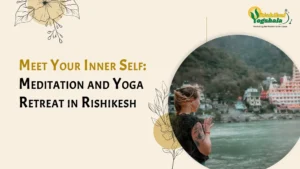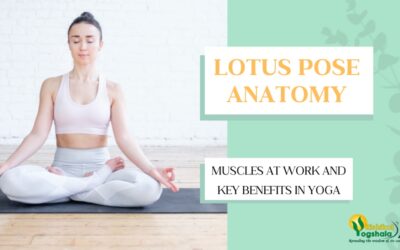What is Matsyāsana?
Matsyāsana or Fish Pose in yoga is derived from the two Sanskrit words; Matsya means “Fish” and asana “Pose”. This pose is the counter pose for the Sarvangasana (Shoulder Stand).
There is a saying about the fish – “Alive without breath, As cold as death; Never thirsty, ever drinking, All in mail, never clinking.“
Practitioners may acquire the power of the fish as this cultivates the great potential within. Over the course of time with regular practice, practitioners will see themselves moving fearlessly and gracefully in any circumstances. This pose also helps to reduce stress, anxiety, and fatigue by increasing the energy levels of the body.
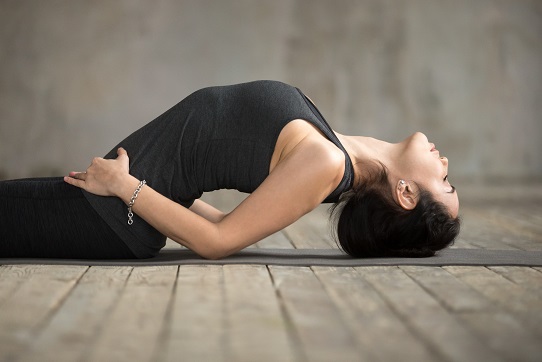
Matsyasana has a great potential which can restore spinal strength and overall body balance, consequently leading to a better physical and emotional outlook of the practitioner. It stimulates spine, cervical muscles, thorax, rib cage, and the lungs, thus relieving the fatigue almost instantly.
Powers Of Matsya
Physical Powers
Fish have long life spans. Some breeds have lived up to a hundred years, and some of the larger ones have lived till the age of 200. Longevity is a characteristic in many aquatic beings. Yogis might have understood that their long lives must be an effect of the way they move and have something to do with their ecosystems. Fish have complete control over their spine and utilise it as the main tool to direct themselves. They fluidly move about in water with the use of their powerful tails and by directing the motions of their spines.
Being constantly in motion requires them to possess vast amounts of energy. Their gills and dynamic lung capacities, which aid them in living underwater, are proof of this efficient energy management system. Powerful lungs and respiratory tracts allow them to find oxygen even in the deepest reaches of the oceans. Even allowing them to survive under that crumbling pressure, which many other life forms cannot do.
Mental Powers
Many of them travel in group to turn away potential disasters, larger predators or to manoeuvre more easily in turbulent waters or over far distances. This is a sign of intelligence, as group mentality always requires cooperation within animals. Fish possess an extremely keen sense of memory. They can remember the places and vast spaces as easy as they were able to do the first time around.
They can even integrate experiences of other beings among the tribe to generate avoidance responses in case of an unpleasant memory of a hunter or fishing grounds where they can get harmed. Many of them have even been observed building on sea floors, repairing the damages in their constructions that assist them to cover up from predators and creating air gaps which they can stay in to avoid dangers.
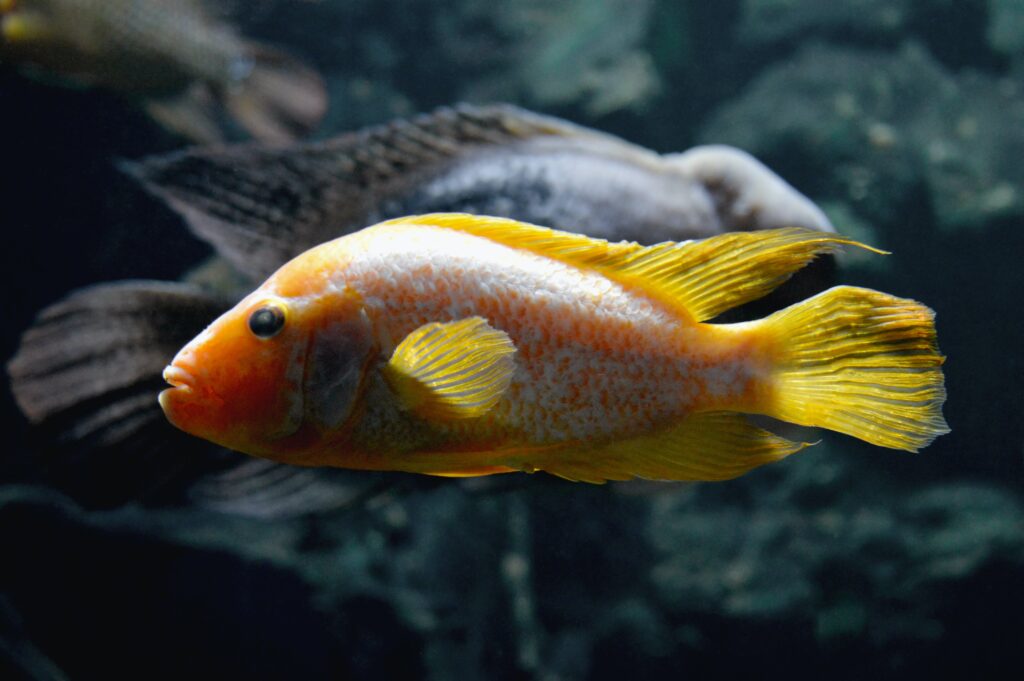
Psychic Powers
Many fishes, like yogis, can hear heartbeats of other organisms around and can figure out the nature of interest these creatures might have towards them. Without them possessing vocal cords, fish do communicate with each other over large distances. They have adapted their bodies to emit and hear low-pitched subsonic sounds, which cannot be heard by our human ear without post-processing aids.
Many of their sounds can be carried by water for thousands of miles and is classified as echolocation. They can also map the seabed using echolocation, which gives them an image of the whole floor ahead of them. This helps them find potential feeding grounds and to stray away from hunters. Fish can even see in color and many of them can see even polarised and ultraviolet lighting. They use this adaptation to cover up themselves during attacks.
How To Do The Asana
Overview & Steps
- Lie down in the Shavasana (Corpse Pose)
- Make sure your whole body is straight in one line in resting position. Arms are straight, with palms facing upwards.
- Gently, bring your palms in under your buttocks.
- Tip your head backwards slightly with your torso resting on the floor.
- Now inhale and use your forearms and elbows to lift your chest, shoulders, upper back, and head off the mat.
- Bring the top of your head, the crown, to rest on the mat and hold this position for a few breaths. Breathe deep and slow.
- To return to the initial position, exhale and by using forearms and elbows, slowly come into Shavasana.
Safety & Precautions to Prevent Injuries
- Keep your neck extended and comfortable throughout the pose. Be careful not to bring your head back so far that you strain your neck.
- Keep your legs strongly engaged and active. Press your thighs down firmly on the floor. This will help you lift your chest higher in the pose.
- Do not bother about how deep your backbend is; instead, focus on evenly distributing the curve of your spine and breathing smoothly throughout the pose.
- While this is a highly beneficial posture, please be careful when you lower and raise the body in and out of the final position; take support of your elbows.
- Rushing this moment may easily result in a spine or neck injury.
Anatomy Of Matsyāsana
This pose is frequently used as an immediate counterpose to Sarvangasana because it reverses the position of the cervical spine from extreme flexion to extreme extension. However, going from one static extreme to the other may not be the most beneficial way to compensate for the stresses of Sarvangasana. A more dynamic approach would be to gradually reverse the movement of the neck with a simple flow leading up to Bhujangasana.
Preparatory And Follow-Up Poses
Preparatory asana –
- Bhujangasana
- Dhanurasana
- Sarvangasana
Follow up asana –
- Ustrasana
- Gomukhasana
- Ardha Matsyendrasana
Key Alignment Of Asana
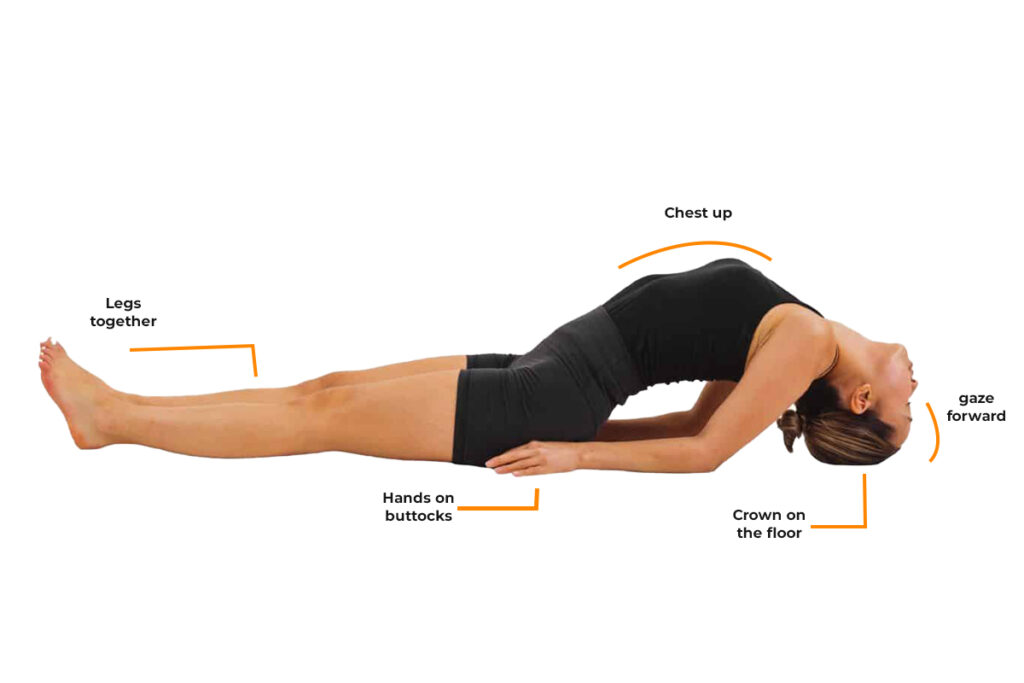
Importance Of Breathing In Matsyāsana
During this practice, the practitioner’s chest opens up wider, which results in more lung capacity. In this pose also, the diaphragm also extends, and the respiration process increases incredibly. Due to the above processes, the amount of oxygen inside the body increases, which transforms into a free flow of prana across the body. As the crown of the head is tilted towards the floor, it also allows a more oxygenated blood supply in the brain area. All these processes result in more strength and stamina within.
Process Of Meditation In Matsyasana
(Sthiram Sukham Asanam)
In the final pose of Matsyasana, when practitioners have achieved complete steadiness and stillness, they must start the visualisation process. At this point, practitioners should withdraw their senses from their bodies, minds, emotions, and thoughts. Slowly shift the awareness onto the visualisation process, where practitioners can see the vast fish, which is full of cosmic energy and power. This fish is universal and has all the distinct qualities. Once the visualization process starts, practitioners must transform themselves into this huge, powerful fish. This will help the practitioners to walk into the path of meditation.
Also Read – Cobra Yoga Pose (Bhujangasana): Benefits and Step-by-Step Guide
Benefits Of Matsyasana
Physical Benefits
- Reducing back pain by improving blood circulation in the spine.
- Improving the functioning of the immune system.
- The muscles in the front of the neck and the abdomen are activated.
- It also tones the pituitary, parathyroid, and pineal glands.
- It relieves respiratory problems as it encourages the right kind of breathing.
- Stimulating blood flow in the pelvic region.
- It also increases vitality and preserves youthfulness.
- Menstrual pain is also reduced.
Psychological Benefits
- Matsyāsana develops and encourages self-expression and is an aid in high-sounding or speaking endeavours.
- The practice of Matsyasana helps reduce anxiety in daily life.
- Nervousness and self-doubt are curbed as well
- Practising this pose also gives instant energy, especially if one is undergoing depression.
- This helps to bring harmony between the body, mind, and emotions.
Mystical Benefits
- Matsyāsana is related to the power of broad perception, motivation & inspiration, and vision of other lands.
- The power of courage increases in every practitioner of this asana, allowing them to reach further and explore more intriguing thoughts.
- By practising this asana, negative energies are transformed into wisdom over the course of time.
Spiritual Benefits
- Matsyāsana opens the Visuddhi chakras and transforms negative energy within a person into wisdom.
- The Sahasrara chakra is also stimulated by this asana, providing immense spiritual benefits in the form of knowledge & wisdom.
- Performing this asana at the end of the day also helps unwind through all the stresses and detoxify, thereby making one experience tranquillity.
- Matsyāsana helps the practitioners to develop the true inner personality – living selflessly for others, which is the basis of human existence.
Contraindications
- You must avoid practising Matsyasana if you have a migraine, back or neck injury, peptic ulcers, a hernia, or heart disease.
- You must not practise this if you are pregnant or have rapid blood pressure fluctuations.
Conclusion
Dive into the enchanting world of Matsyāsana, the Fish Pose, channelling vitality and wisdom. As a key component in 200-hour and 300 Hour Yoga Teacher Training in Rishikesh, this pose unlocks the secrets of yogic wisdom. Engage in practice at the oldest yoga school in Rishikesh, exploring the transformational power of Matsyasana.
Incorporating this pose into your practice can lead to significant improvements in overall well-being. For those interested in deepening their yoga journey, consider enrolling in a yoga teacher training program. Rishikul Yogshala, a leading Yoga school in Rishikesh, offers comprehensive courses like the 100 Hour Yoga Teacher Training In India, 200 Hour Yoga Teacher Training In India, 300 Hour Yoga Teacher Training In India, and 500 Hour Yoga Teacher Training India. These programmes are designed to help you master your practice and share the transformative power of yoga with others.


